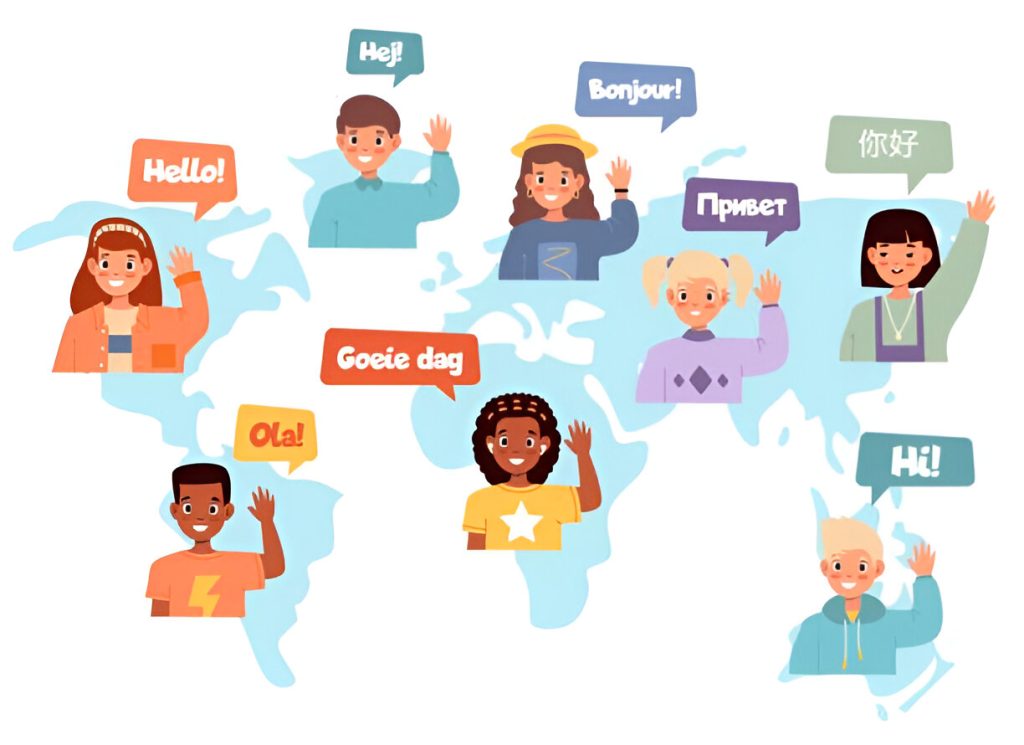There are about freaking 7,000 languages spoken all over the world, which is insane. So, by any chance, you think your website would work with just English as its only content language, sir, you might be wrong. But then, what to do? The answer – multilingual SEO— the trick to step into new markets, engage diverse audiences, and drive growth like never before.
What is Multilingual SEO?
Multilingual SEO is optimizing your website to rank higher on search engines for multiple languages. And no it is not translating content into different languages; it’s about making your website visible to relevant regions, each with its own unique linguistic and cultural nuances.
In a system where English is not the primary language for over 75% of internet users, implementing multilingual SEO is not just a plus point—it’s the need of the hour. Interestingly, 73% of consumers prefer to buy from websites that offer information in their own language. If you only target to please English-speaking users, you’re missing out on a massive opportunity.
Why is Multilingual SEO Important?
Reaching a Global Audience
A website optimized in multiple languages is actually the one that would open your business to the world! France, China, Brazil, and beyond, connect with users located at any point on the globe from just a single website. Offering content in different languages can make you reach 75% more internet users and that, my friend is a game-changer.
Building Trust and Credibility
Who would you want to purchase even a single service or product from a website that you don’t even trust? Trust is the utmost factor in any purchasing decision. A user comes across your website and sees your effort to put the content in their native language. Well, that would develop trust and credibility in their mind and of course smiles on their faces. They’re more likely to feel comfortable steering your site, understanding your offerings, and ultimately clicking that purchase button (or inquiry button).
The Challenges of Multilingual SEO
Technical Hurdles
Multilingual SEO isn’t just about translating your content—it requires a striking strategy.
This involves choosing the right URL structure (more on that later), implementing hreflang tags, and making sure that search engines can properly index and serve the right language version to the right audience.
Content Quality and Consistency
Translation is tricky. You can’t just swap words from one language to another; you gotta preserve the meaning, tone, and intent. Poor translations would lead to misunderstandings, and damage to brand reputation, and SEO efforts would all go in vain.
Maintaining consistency across different language versions of your site is crucial—your messaging needs to be clear and cohesive, no matter what the language is.
Steps to Implement Multilingual SEO
1. Identify Target Languages and Regions
Look out for the regions and languages that would be most relevant to your brand. The recipe might involve analyzing your current traffic to see where users are coming from, or researching new markets that might swoop in. Once that is done, you can begin the process of optimizing your site for those languages.
2. Choose the Right URL Structure
Multilingual SEO comes with your website’s URL structure playing a key role. There are three main options to consider:
- Subdirectories: Example.com/fr/ or Example.com/es/
- Subdomains: fr.Example.com or es.Example.com
- Separate Domains: Example.fr or Example.es
Each option has its pros and cons. Subdirectories are the one that are easy to manage and maintain, while geo-targeting can be achieved by subdomains. Separate domains offer the most control but are the most resource-intensive. The best choice depends on your business needs and resources.
3. Implement Hreflang Tags
For search engines to know about the language and area that a website is targeting, hreflang tags are salt in the dish. These tags guarntee that viewers receive the proper version of your website based on their language preferences and location. Without these hreflang tags, one can have a bad user experience and perhaps worse rankings.
4. Translate Content—But Go Beyond Translation
The translation is just a baby step. To genuinely engage with your audience, you must localize your material. Localization entails tailoring your material to the cultural and linguistic preferences of your intended audience. This might include changing idioms, allusions, or even entire portions of material to ensure they resonate with local users. The idea is to make your material feel authentic to each audience, rather than simply translated.
5. Optimize for Local Keywords
Keyword research is a crucial aspect of any SEO strategy, including multilingual SEO. However, keyword behavior might differ dramatically among languages and places. It is critical to undertake extensive keyword research for each target language to determine the phrases that people are genuinely looking for. Don’t just translate your English keywords; pick keywords that are specific to each market.
6. Pay Attention to Technical SEO
Don’t you ever forget about technical SEO (period) it is important. Make your website quick, mobile-friendly, and simple to navigate. Try to use structured data whenever possible, and ensure that all versions of your site are correctly indexed by search engines. These techniques will help your site rank higher in search results, whatever the language.
7. Monitor and Adjust
You can’t apply SEO and go on a long long sleep, and well, the same with multilingual SEO. One has to use analytics tools, to track the performance of each language version. Traffic, bounce rates, and conversion rates are needed to be tracked to observe how people from various countries engage with your content. And if something doesn’t work out, don’t shy away from making changes –modify your content, change your keyword approach, or improve your site structure.
Tools for Multilingual SEO
A helping hand is nice to have, and believe it there are a lot of tools out there for you to manage your multilingual SEO efforts.
- Google Search Console: Essential for monitoring how your site is performing in search results, including different language versions.
- Ahrefs or SEMrush: Do the best keyword research, track rankings, and analyze competitors in different markets.
- Translation Tools: Translate and manage your multilingual content much easier with Weglot or WPML and thank us later!
Conclusion
Don’t mistake Multilingual SEO as just jargon—it’s a mind boggling technique that can take your services and products to new markets. By considering multilingualism in your website, you can expand your audience, build trust, and of course increase sales.
Remember, you are just not translating your content—you are making it seamless and localized for users in every market you serve.
So, why are you watching the clock tick? Start your multilingual SEO journey today with Buffalo Soldiers and watch your business reach new heights!







